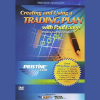-
×
 Crystal Ball Pack PLUS bonus Live Trade By Pat Mitchell - Trick Trades
1 × $20.00
Crystal Ball Pack PLUS bonus Live Trade By Pat Mitchell - Trick Trades
1 × $20.00 -
×
 Crypto Trading Academy with Cheeky Investor - Aussie Day Trader
1 × $13.00
Crypto Trading Academy with Cheeky Investor - Aussie Day Trader
1 × $13.00 -
×
 Advanced Spread Trading with Guy Bower - MasterClass Trader
1 × $15.00
Advanced Spread Trading with Guy Bower - MasterClass Trader
1 × $15.00 -
×
 Trading Short TermSame Day Trades Sep 2023 with Dan Sheridan & Mark Fenton - Sheridan Options Mentoring
1 × $31.00
Trading Short TermSame Day Trades Sep 2023 with Dan Sheridan & Mark Fenton - Sheridan Options Mentoring
1 × $31.00 -
×
 Trade with Precision Price Action Course Silver+Bronze By Nick McDonald
1 × $116.00
Trade with Precision Price Action Course Silver+Bronze By Nick McDonald
1 × $116.00 -
×
 Essentials in Quantitative Trading QT01 By HangukQuant's
1 × $23.00
Essentials in Quantitative Trading QT01 By HangukQuant's
1 × $23.00 -
×
 Options Trading & Ultimate MasterClass With Tyrone Abela - FX Evolution
1 × $54.00
Options Trading & Ultimate MasterClass With Tyrone Abela - FX Evolution
1 × $54.00 -
×
 The Best Option Trading Course with David Jaffee - Best Stock Strategy
1 × $15.00
The Best Option Trading Course with David Jaffee - Best Stock Strategy
1 × $15.00 -
×
 Currency Trading Seminar with Peter Bain
1 × $6.00
Currency Trading Seminar with Peter Bain
1 × $6.00 -
×
 SQX Mentorship with Tip Toe Hippo
1 × $23.00
SQX Mentorship with Tip Toe Hippo
1 × $23.00 -
×
 Create Your Trade Plan with Yuri Shramenko
1 × $6.00
Create Your Trade Plan with Yuri Shramenko
1 × $6.00 -
×
 $20 – 52k 20 pips a day challange with Rafał Zuchowicz - TopMasterTrader
1 × $5.00
$20 – 52k 20 pips a day challange with Rafał Zuchowicz - TopMasterTrader
1 × $5.00 -
×
 Ultimate Trading Course with Dodgy's Dungeon
1 × $8.00
Ultimate Trading Course with Dodgy's Dungeon
1 × $8.00 -
×
 Forecast 2024 Clarification with Larry Williams
1 × $15.00
Forecast 2024 Clarification with Larry Williams
1 × $15.00 -
×
 The Prop Trading Code with Brannigan Barrett - Axia Futures
1 × $23.00
The Prop Trading Code with Brannigan Barrett - Axia Futures
1 × $23.00 -
×
 Crypto Momentum Trading System with Pollinate Trading
1 × $34.00
Crypto Momentum Trading System with Pollinate Trading
1 × $34.00 -
×
 TradeCraft: Your Path to Peak Performance Trading By Adam Grimes
1 × $15.00
TradeCraft: Your Path to Peak Performance Trading By Adam Grimes
1 × $15.00 -
×
 WondaFX Signature Strategy with WondaFX
1 × $5.00
WondaFX Signature Strategy with WondaFX
1 × $5.00 -
×
 The Orderflow Masterclass with PrimeTrading
1 × $17.00
The Orderflow Masterclass with PrimeTrading
1 × $17.00 -
×
 The Trading Blueprint with Brad Goh - The Trading Geek
1 × $5.00
The Trading Blueprint with Brad Goh - The Trading Geek
1 × $5.00 -
×
 Order flow self-study training program with iMFtracker
1 × $10.00
Order flow self-study training program with iMFtracker
1 × $10.00 -
×
 Deep Dive Butterfly Trading Strategy Class with SJG Trades
1 × $41.00
Deep Dive Butterfly Trading Strategy Class with SJG Trades
1 × $41.00
Creating & Using a Trading Plan with Paul Lange
$8.00
File Size: Coming soon!
Delivery Time: 1–12 hours
Media Type: Online Course
Trading Plan with Paul Lange: 6 Key Components
Introduction
In the dynamic world of trading, having a robust trading plan is essential for achieving consistent success. Paul Lange, a seasoned trader and educator, emphasizes the importance of a well-structured trading plan. This article will explore how to create and use a trading plan effectively, incorporating Paul Lange’s insights and strategies to help you navigate the financial markets with confidence.
Why You Need a Trading Plan
The Importance of a Trading Plan
A trading plan serves as your blueprint for trading activities. It outlines your goals, strategies, risk management techniques, and helps maintain discipline, reducing emotional decision-making.
Benefits of a Structured Plan
A well-defined trading plan can lead to more consistent results, minimize losses, and provide a clear path to achieving your financial goals.
Key Components of a Trading Plan
1. Setting Clear Objectives
Defining Your Goals
Start by setting specific, measurable, attainable, relevant, and time-bound (SMART) goals. Clear objectives provide direction and motivation.
Short-Term vs. Long-Term Goals
Differentiate between short-term and long-term goals to create a balanced approach. Short-term goals could involve weekly or monthly targets, while long-term goals focus on annual performance.
2. Market Analysis
Technical Analysis
Technical analysis involves studying price charts and using indicators to predict future price movements. Tools like moving averages, RSI, and MACD are crucial for this.
Fundamental Analysis
Fundamental analysis evaluates a company’s financial health, economic indicators, and market conditions. Combining both technical and fundamental analysis provides a comprehensive view.
3. Trading Strategies
Day Trading
Day trading involves buying and selling securities within the same trading day. It requires quick decision-making and a solid understanding of market trends.
Swing Trading
Swing trading aims to capture gains over a period of days or weeks. It involves holding positions longer than a day but shorter than long-term investments.
Position Trading
Position trading involves holding investments for an extended period, from several months to years. This strategy focuses on long-term trends and market fundamentals.
4. Risk Management
Setting Stop-Loss Orders
Stop-loss orders help protect your investments by automatically closing a trade at a predetermined loss level, limiting potential losses.
Position Sizing
Determine the size of each trade based on your total capital and risk tolerance. Proper position sizing ensures you do not risk too much on a single trade.
Diversification
Diversify your portfolio across different assets and markets to reduce risk and increase potential returns.
5. Record Keeping
Maintaining a Trading Journal
A trading journal helps track your trades, analyze performance, and identify patterns. It is an invaluable tool for continuous improvement.
What to Record
Include details such as entry and exit points, trade rationale, outcome, and lessons learned. Regularly reviewing your journal can provide insights into your strengths and areas for improvement.
6. Continuous Learning
Staying Updated
Financial markets are dynamic, and staying updated with the latest news, trends, and technologies is essential. Follow market news, attend webinars, and read trading books to keep your knowledge current.
Adapting to Market Changes
Markets evolve, and so should your trading plan. Be prepared to adjust your strategies based on market conditions, performance analysis, and new insights.
Creating Your Trading Plan with Paul Lange
Step-by-Step Guide
- Define Your Objectives: Set SMART goals for your trading activities.
- Analyze the Market: Use both technical and fundamental analysis to understand market trends.
- Develop Trading Strategies: Choose strategies that align with your goals and market conditions.
- Implement Risk Management: Set stop-loss orders, determine position sizing, and diversify your portfolio.
- Maintain a Trading Journal: Record your trades and review them regularly to improve your performance.
- Commit to Continuous Learning: Stay informed and adapt your plan as needed.
Practical Tips for Using Your Trading Plan
Sticking to Your Plan
Discipline is key. Stick to your trading plan even during volatile market conditions. Avoid making impulsive decisions based on emotions.
Reviewing and Adjusting
Regularly review your trading plan and adjust it based on your performance and changing market conditions. Continuous improvement is essential for long-term success.
Learning from Mistakes
Every trader makes mistakes. Use your trading journal to learn from these mistakes and refine your strategies.
Conclusion
Creating and using a trading plan is essential for achieving success in the financial markets. Paul Lange’s insights provide a comprehensive framework for developing a plan that can lead to consistent profits. By setting clear objectives, analyzing the market, developing robust strategies, managing risk effectively, maintaining a trading journal, and committing to continuous learning, you can enhance your trading performance and achieve your financial goals.
Commonly Asked Questions:
- Business Model Innovation: Accept the truth of a legitimate business! Our strategy is organising a group buy in which participants share the costs. We use these cash to acquire popular courses from sale pages and make them available to people with limited financial resources. Despite the authors’ worries, our clients love the cost and accessibility we give.
- The Legal Environment: Yes or No The legality of our activity is ambiguous. While we don’t have specific permission from the course authors to resell the material, there is a technicality at work. The author did not specify any limits on resale when purchasing the course. This legal intricacy is both an opportunity for us and a boon for individuals looking for low-cost access.
- Quality Control: Uncovering the Truth
Getting to the heart of the issue – quality. Purchasing the course straight from the sale page guarantees that all documents and resources are the same as those obtained through traditional channels.
However, we distinguish ourselves by going beyond personal research and resale. It is crucial to note that we are not the official course providers, which means that the following premium services are not included in our package:
- There are no scheduled coaching calls or sessions with the author.
- Access to the author’s private Facebook group or web portal is not permitted.
- No access to the author’s private membership forum.
- There is no direct email support available from the author or their team.
We operate independently, with the goal of bridging the pricing gap without the extra services provided by official course channels. Your comprehension of our distinct approach is much appreciated.
Be the first to review “Creating & Using a Trading Plan with Paul Lange” Cancel reply
You must be logged in to post a review.
Related products
Forex Trading
Forex Trading
Forex Trading
Forex Trading
Forex Trading
Forex Trading
Forex Trading
Forex Trading
Forex Trading
Forex Trading
Forex Trading
Forex Trading















Reviews
There are no reviews yet.